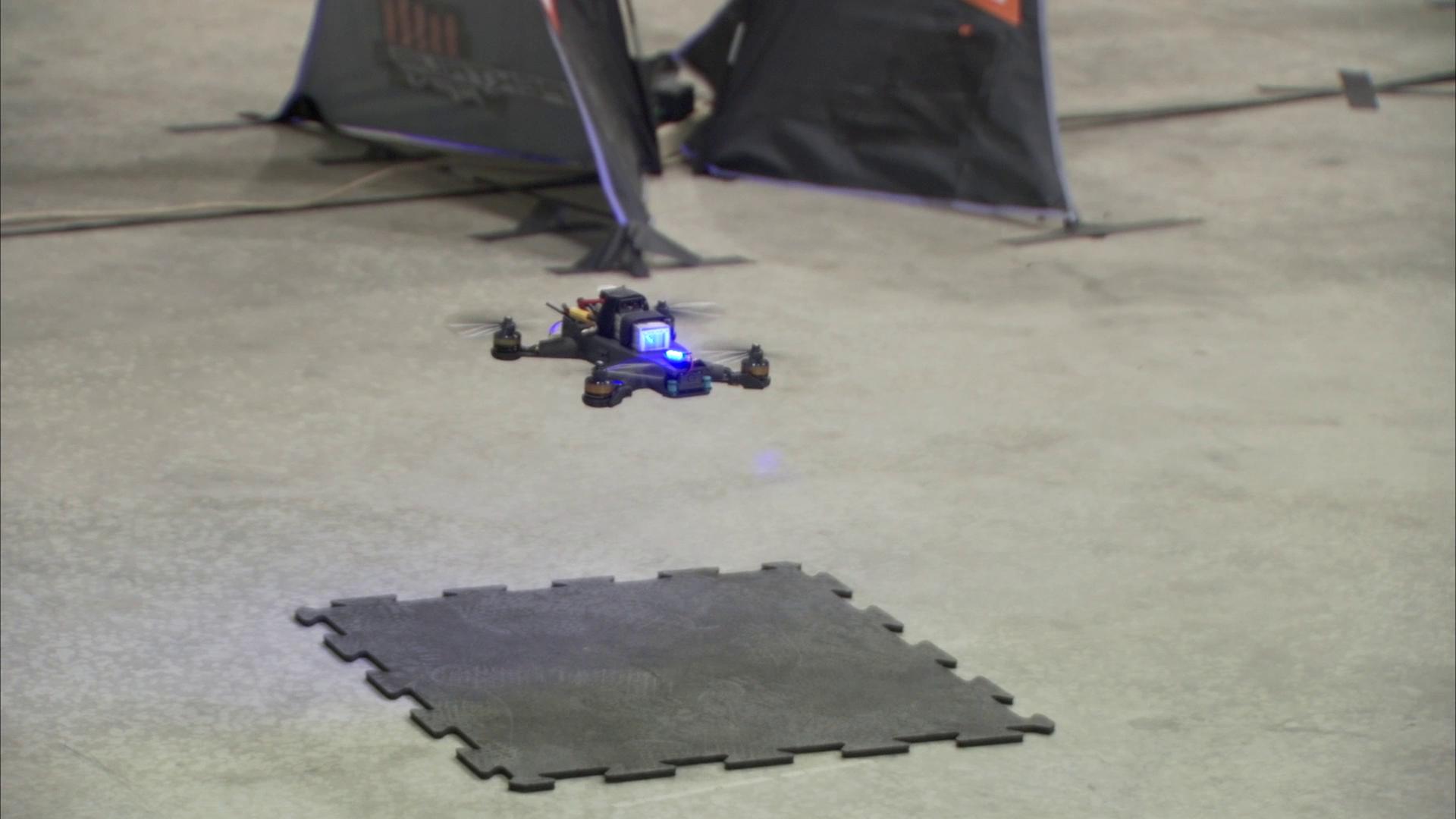NASA Drone Race Pits Man Against Machine (Video)
To showcase NASA's accomplishments on artificially intelligent navigation, the agency invited professional drone racer Ken Loo to go toe-to-toe with their software.
The race on Oct. 12 followed two years of AI research by NASA's Jet Propulsion Laboratory (JPL), in Pasadena, Calif. JPL's success in spacecraft navigation attracted Google, who funded the research on drone autonomy, NASA said in the statement accompanying a video they released on Tuesday (Nov. 21).
JPL built three quadcopter drones — nicknamed Batman, Joker and Nightwing — to test the new software. The algorithms use two cameras mounted on each drone and compare what they see with a pre-loaded map of the area. The program also takes advantage of Google Tango, an augmented reality technology the company developed to use vision to allow a device to determine its position and location. [10 Ways Robots Move on Mars]

The team set up an obstacle course in one of JPL's warehouses to put the software to the test. "We pitted our algorithms against a human, who flies a lot more by feel," Rob Reid, the project's task manager, said in the statement.
The two pilots began with similar lap times. However, Loo was able to learn the course after many laps. He achieved higher top speeds with impressive aerial maneuvers, cutting down his overall times. In contrast, the AI took the course more cautiously, but more consistently as well. "The AI was able to fly the same racing line every lap," NASA said.
The pilots also faced unique challenges. Sometimes, the race-ready drones moved so fast that the cameras couldn't properly focus, which disoriented the computer flying them. But as the day wore on, Loo had to battle fatigue, a problem the AI pilot needn't worry about. You'll have to watch the video to see who won the race.
Most autonomous drones use GPS to navigate. But this won't work for indoor spaces and crowded urban environments — hence the efforts to develop alternative forms of computer navigation. These technologies may find use in warehouses, roads, and disaster sites, Reid said.
Get the Space.com Newsletter
Breaking space news, the latest updates on rocket launches, skywatching events and more!
Email Harrison Tasoff at htasoff@space.com or follow him @harrisontasoff. Follow us @Spacedotcom, Facebook and Google+. Original article on Space.com.
Join our Space Forums to keep talking space on the latest missions, night sky and more! And if you have a news tip, correction or comment, let us know at: community@space.com.

Harrison Tasoff is a science journalist originally from Los Angeles. He graduated from NYU’s Science, Health, and Environmental Reporting Program after earning his B.A. in mathematics at Swarthmore College. Harrison covers an array of subjects, but often finds himself drawn to physics, ecology, and earth science stories. In his spare time, he enjoys tidepooling, mineral collecting, and tending native plants.









